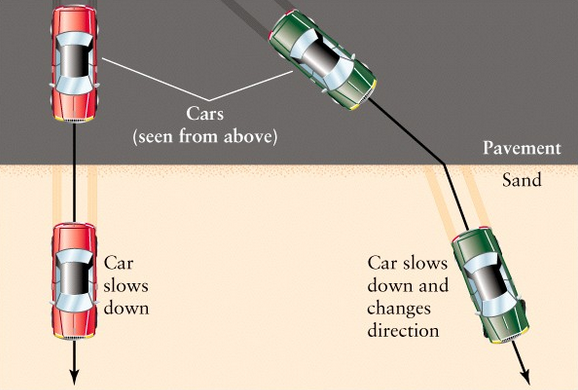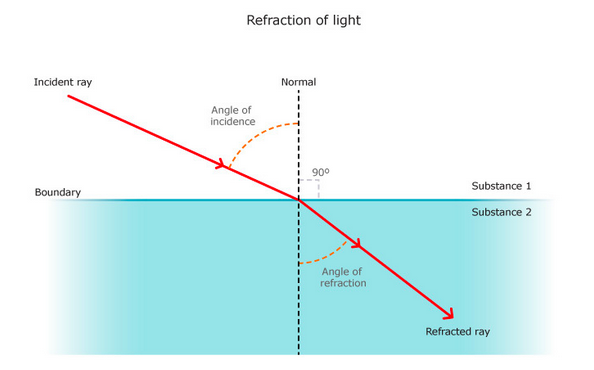Refraction
Introduction
⇒ Refraction is something that happens to waves as it goes from one medium to another
⇒ Here is an analogy to explain...

⇒ As the car, here, moves from the road to the sand it will slow down
- Thus, if the car moves directly at the sand it will simply slow down, but it will not change direction because it has gone diectly at the sand
⇒ However, if the car, instead, moves towards the sand at an angle, the right-front wheel will hit the sand first causing the car to rotate and then slow down
⇒ Light does exactly the same thing as it moves from one medium to another when that second medium is more optically dense
Air and Glass

⇒ Here we have air and glass
⇒ Glass, on the bottom, is more optically dense, meaning light will travel slower through glass
⇒ So, if we shine a light ray directly at it (along the normal on the picture above), nothing will happen; it will go straight through the glass
⇒ However, if you shine the light at an angle to the glass, when the light hits the glass it will bend towards the normal
- Two angles are created: one angle between the incidence ray and the normal (the angle of incidence) and one angle between the refracted ray and the normal (the angle of refraction)
⇒ If the light ray goes through the glass and back into air, the light ray will bend away from the norm this time at the exact same angle as the angle of incidence
⇒ Another thing to remember is that when the light hits the glass (i.e. the light moves from a less optically dense region to a more optically dense region), the light waves will compress together (i.e. the wave length reduces) and the wave speed will decrease (and will do so in such a way that the frequency does not change)
- It does the exact opposite when the light moves from a more optically dense region to a less optically dense region